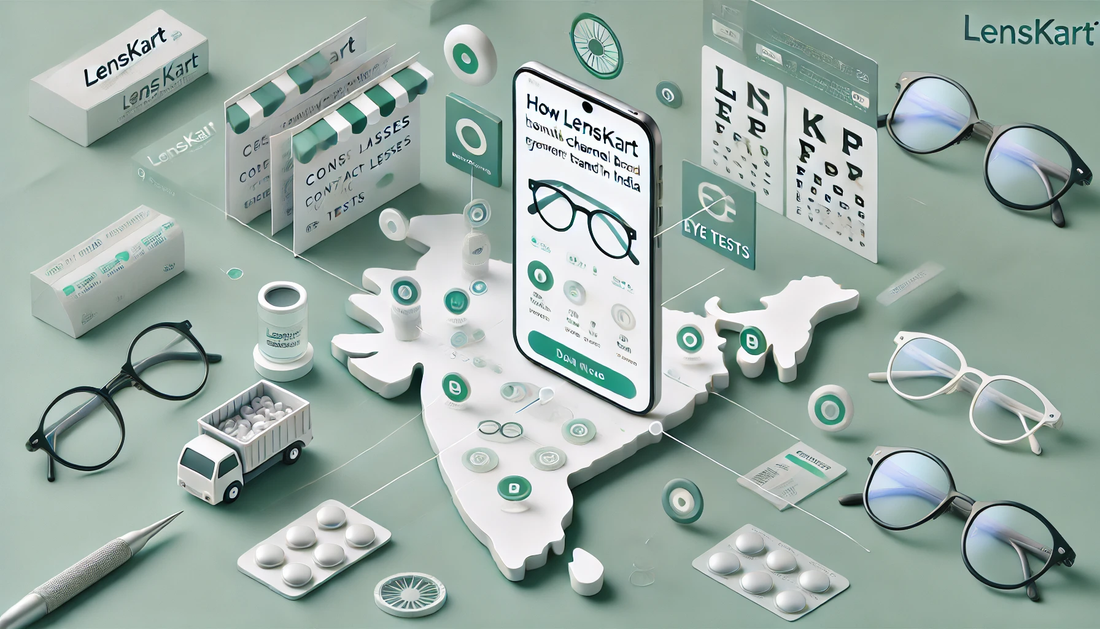In the bustling landscape of Indian startups, Lenskart stands out as a beacon of innovation and success. Founded in 2010 by Peyush Bansal, Lenskart has transformed the eyewear industry in India. It’s a story of vision, strategy, and relentless execution.
For startup founders, Lenskart’s journey offers a treasure trove of insights. From leveraging technology to building a multi-channel presence, Lenskart’s strategies are worth emulating.
Let’s dive into the key takeaways that can inspire and guide your startup journey.
Understanding the Market
Lenskart began with a deep understanding of the Indian eyewear market. They identified a gap: the lack of affordable, stylish eyewear. This insight was pivotal. For startups, understanding your market is crucial. Conduct thorough research and identify unmet needs.
Leveraging Technology
Technology is at the heart of Lenskart’s success. They introduced a virtual try-on feature, allowing customers to try glasses online. This innovation enhanced the shopping experience.
Startups should explore how technology can solve customer pain points and enhance engagement.
Building a Multi-Channel Presence
Lenskart’s multi-channel strategy is exemplary. They combined online convenience with offline experience. Their physical stores complement their online presence, offering customers the best of both worlds.
For startups, a multi-channel approach can expand reach and improve customer satisfaction.
Focus on Customer Experience
Customer experience is a cornerstone of Lenskart’s strategy. They offer free eye tests and home trials, ensuring convenience and satisfaction. Startups should prioritize customer experience, as it builds loyalty and drives word-of-mouth marketing.
Data-Driven Decisions
Lenskart uses data analytics to understand customer preferences and optimize operations. Data-driven decisions can lead to better product offerings and marketing strategies. Startups should invest in analytics to gain insights and make informed decisions.
Strong Brand Identity
Lenskart has built a strong brand identity with a focus on quality and affordability. Their branding resonates with a wide audience. Startups should develop a clear brand identity that reflects their values and appeals to their target market.
Strategic Partnerships
Partnerships have played a crucial role in Lenskart’s growth. Collaborations with global brands and local optometrists have expanded their reach. Startups should seek strategic partnerships that can provide new opportunities and enhance credibility.
Scalability and Innovation
Lenskart’s scalable model and continuous innovation have fueled their growth. They constantly introduce new products and services. Startups should focus on scalability and foster a culture of innovation to stay competitive.
Effective Marketing Strategies
Lenskart’s marketing strategies are diverse and effective. They use digital marketing, influencer collaborations, and traditional advertising. Startups should adopt a multi-faceted marketing approach to reach a broader audience and build brand awareness.
Financial Prudence
Financial management is key to Lenskart’s sustainability. They have balanced growth with profitability. Startups should practice financial prudence, ensuring they have a sustainable business model and sufficient runway for growth.
Conclusion
Lenskart’s journey from a startup to a leading eyewear brand is inspiring. Their strategies offer valuable lessons for startup founders. By understanding the market, leveraging technology, and focusing on customer experience, startups can carve their path to success.
Remember, every startup journey is unique. While Lenskart’s strategies provide a blueprint, adapt them to your context. Stay committed, be innovative, and let your vision guide you. The world of entrepreneurship awaits your success story.










